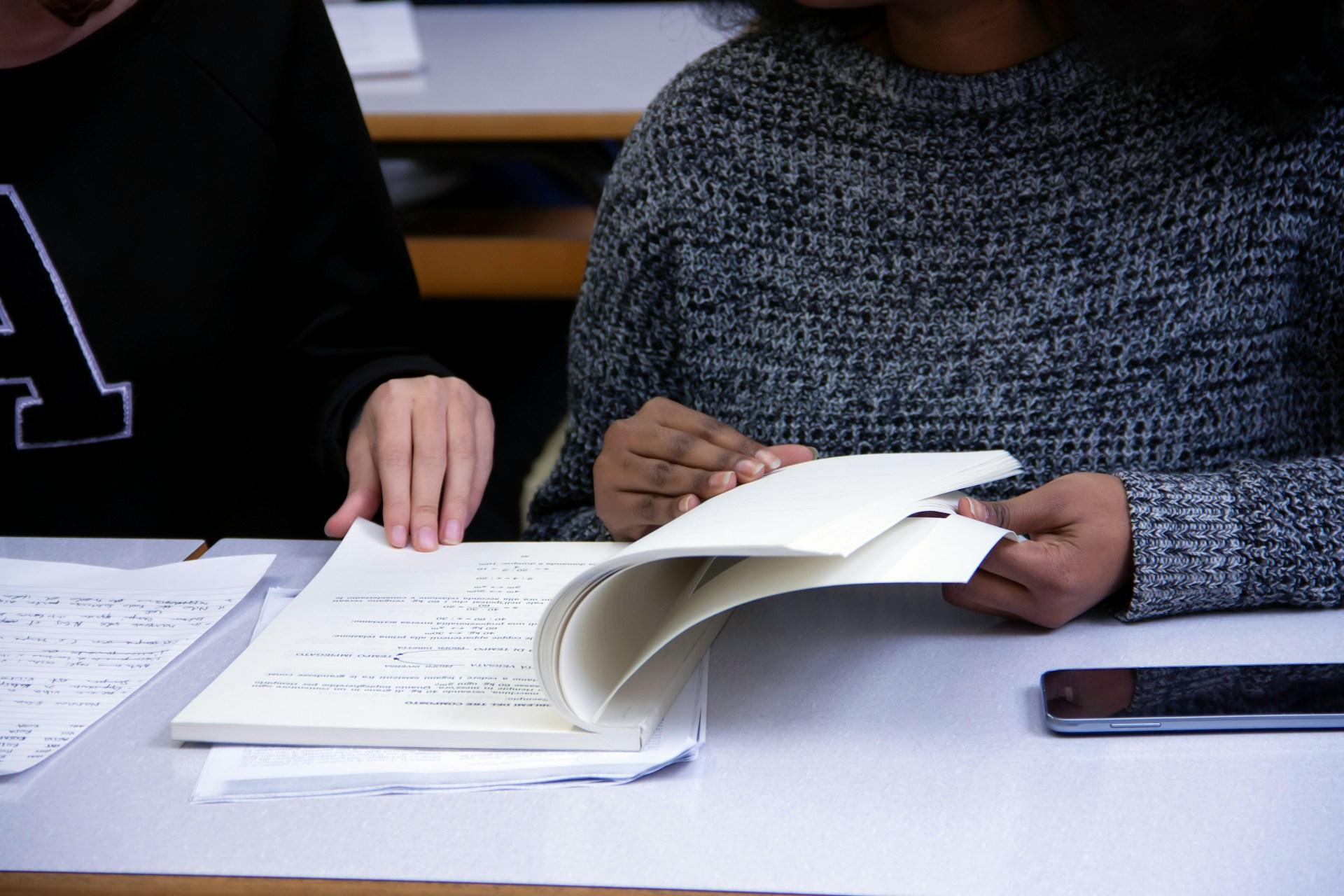For both students and professionals, reading comprehension is an important skill that will help them to better understand any text that they read.
For non-native speakers of a language, reading comprehension is even more important. It can help gain new knowledge about a topic, the language itself, and even vocabulary.
Along with writing, listening, and speaking, reading is one of the key skills that language users need to master.
Whether you're learning a language or teaching it, here's how to get the most out of the texts you read.

Set Goals
To read anything in another language, a student should always set themselves goals. If a teacher has given you a text to read, you'll likely have some activities or exercises to do.
Students who have reading comprehension exercises to do should read the questions or the tasks before reading the text. This will help them look out for key information during their reading session and will make the most important words and phrases stand out on the page.
For students, the main goals will likely be the exercises set by their teacher. If you're reading for pleasure or research, then you may have to set your own goals.
Prepare to Read the Text
Since texts can cover almost any topic, it can help to do some research before you read the text. Rather than dive straight into reading and potentially misunderstand parts of it, you might want to carefully read the introduction and skim any headings.
If reading online, you'll notice that key phrases may be in bold or italics, which can help give you a better idea of what the text is about. Like our articles, you can also see the typical reading time for a text. It's best not to sit down to read something if you don't have enough time.
Having a good idea of what you're about to read will help you when you read it. Make sure that you're in a space free of distractions and try not to read in noisy spaces.
Background Reading
By preparing to read the text, you'll know if the text is appropriate to you. There are many different reading comprehension strategies, but it's much easier to read something if the text is at your level.
If you prepare to read a text and it's clear that the subject is completely new to you, you may need to do some research or read other content on the same topic.

Students reading on websites and pages like Wikipedia can improve their understanding by reading other articles and texts on concepts mentioned within an article.
Just make sure that you remember which article or text you were planning on reading in the first place. You can very easily get distracted on websites like Wikipedia and end up in a process of reading lots of different things rather than the main text you tried to initially read.
Active Reading
You might think that any kind of reading is active reading. However, active reading is more like doing research than simply reading and understanding a text.

To actively read a text, students should be taking notes, highlighting key information, and even coming up with questions and ideas for further reading once they've finished the main text.
This will feel like a lot of work the first time you do it, but as you get into the habit, this strategy will become second nature to you and help you to develop useful comprehension for reading in any language.
It doesn't hurt to also get different colored highlighters. You can use colors to highlight key information, new words to add to your vocabulary, or even areas that you didn't understand and may require further reading.

Read Aloud
Reading aloud is another way to make the reading process more active. It also reduces the chance of you skimming over words or ignoring parts of the text.
By reading aloud, you'll also engage other parts of your brain in the reading process. You'll not just remember reading the text, you'll also remember saying the words and hearing yourself say them.
It will also help you to highlight tricky or confusing parts of the text. A longer passage or sentence will feel longer when you have to read it aloud. You'll notice these when you try to say the words and it's a good indicator that there may be some useful information in there.
For learning a language like English, this can be very helpful for your speaking, too, as it will show you which words you aren't sure how to pronounce. Highlight them in a specific color for “pronunciation practice”.
Checking Comprehension
Upon finishing reading any text, the reader should immediately check their comprehension of the text. Your teacher might have given you activities to do this, but if they haven't, you'll have to do this yourself.
Think about what the text is about and check your reading comprehension as you read it. This may include reading certain paragraphs and sentences several times, especially if you don't feel that you've understood a certain part.

If you're actively reading, you'll probably highlight a part that you don't understand. When you do, go back over the section that you're finding confusing and consider reading it a second time.
Remember that you may need to read an entire text several times to fully understand it and the parts that you highlight as confusing or difficult are the parts that you should pay particular attention to when reading it another time.
Summarize and Paraphrase
To really see if you've understood a text that you've read, try to summarize or paraphrase it. While this isn't active reading, since you'll do it after you've finished reading the text, it's a similar strategy as it forces you to actively think about what you've been reading.
This is a good way to practice your writing, too, and while you won't be expected to write a literary masterpiece, you should try and distill all the key information into shorter sentences and paragraphs.
Writing and summarizing a text in your own words is far more useful than simply remembering the words and repeating what was said in the text. This shows that you've understood the information in the text rather than simply the words.
Get into the habit of writing a short summary of the texts you have to read as they'll come in useful if you have to use any of these texts to study for a test.
What is the Difference Between Summarizing and Paraphrasing?
A shorter version of the original text with just the key information.
A reworded or restructured version that preserves the original meaning.
Test Yourself
Regularly testing yourself is one of the most important strategies that students can use to boost their reading comprehension.
More often than not, your teacher will have given you homework, activities, or even a test to check your reading comprehension. When reading for pleasure, this is also a useful way to check that you've remembered the information from a text or passage.

You can create questions to test yourself from the key information that you highlighted while actively reading the text.
Enroll in esl classes chicago to improve your English language skills and immerse yourself in a diverse learning environment. With expert instructors and practical lessons, you'll gain the confidence and proficiency needed for success.
Further Reading
As you actively read and highlight your text, choose a specific color to highlight sections of the text that you need more information on.
You may find that your reading comprehension is being held back by a lack of information or understanding in certain areas.
When you reread the text or put together notes or summaries on the text, you'll be able to make notes of topics for further reading.
If your teacher isn't giving you more things to read, then you can always do your own research and further reading to improve your overall comprehension of the original text.
Get Help From a Private Tutor with Superprof
Still struggling despite all your best efforts to actively read, take notes, and test your comprehension?
Don't worry! You can always get help with reading comprehension from a dedicated private tutor.
On the Superprof website, you can find tutors offering esl classes for adults in a variety of subjects like ESOL, English, and literature as well as in study skills like reading comprehension.
There are private tutors all over the US and around the world. Just search for the area you need help with.
A one-on-one private tutor can sit down with you and help you through a complicated text, helping you to learn and practice all the important reading comprehension strategies.
They can also test you on your comprehension, which can be quite difficult to do on your own if you're not even sure that you understood the text.
When you can't find any local tutors to help you, you can always broaden your search to include esl classes online. For academic subjects and languages, they can be just as effective as face-to-face tutors and they often charge less per session!
Start implementing reading comprehensions strategies today with Superprof!
























